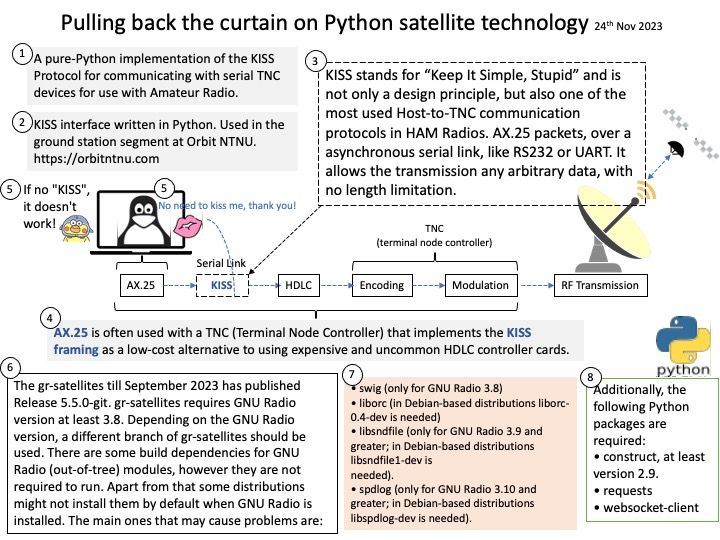
Preface: Satellite communications use the very high-frequency range of 1–50 gigahertz (GHz; 1 gigahertz = 1,000,000,000 hertz) to transmit and receive signals. The frequency ranges or bands are identified by letters: (in order from low to high frequency) L-, S-, C-, X-, Ku-, Ka-, and V-bands. The band 435- 438 MHz is heavily used for amateur satellites in accordance with No. 5.282. No. 5.278 (WRC-19) provides primary status for the amateur service at 430-440 MHz in 11 countries in Region 2.
Background: About twenty-five years ago, satellites were advanced technology. Satellite technology services, especially GPS, have become commonplace today. Perhaps it is an invisible force that makes development stronger and stronger. Who is this knight? It is the Python programming language technology. But you may ask, why do people always say that Python program development has a large share in the industrial world including aerospace technology. Long story short, Python has ready-made software modules, and software developers can use similar concepts to start their new development. This is the advantage of open source software.
Pulling back the curtain on Python satellite technology: gr-satellites is an OOT module encompassing a collection of telemetry decoders that supports nearly 40 different Amateur satellites. This open-source project started in 2015 with the goal of providing telemetry decoders for all the satellites that transmit on the Amateur radio bands.
gr-satellites is a GNU Radio out-of-tree module encompassing a collection of telemetry decoders that supports many different Amateur satellites.It supports most popular protocols, such as AX.25, the GOMspace NanoCom U482C and AX100 modems, an important part of the CCSDS stack, the AO-40 protocol used in the FUNcube satellites, and several ad-hoc protocols used in other satellites.
The KISS frame allow transmission of AX.25 packet radio frames containing IP packets over an asynchronous serial link.
KISS stands for “Keep It Simple, Stupid” and is not only a design principle, but also one of the most used Host-to-TNC communication protocols in HAM Radios. It is a very simple protocol that standardizes the transmission of data, normally AX.25 packets, over a asynchronous serial link, like RS232 or UART. It allows the transmission any arbitrary data, with no length limitation.
Reference: Using GPS in amateur radio is about GPS and other GNSS (Global Navigation Satellite System) satellites and how we can use the data broadcast by them for amateur radio. You will find that GPS benefits in digital modes like FT8, WSPR, and WSJT which rely on accurate transmit and receive period timing and this is easy to achieve with internet access to international time servers.
Please refer to the link for details: